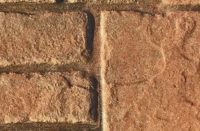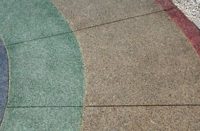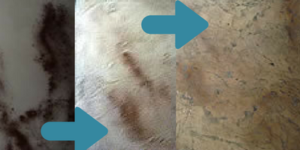There are a number of principles that come into play when designing a landscape, including proportion, unity, balance and rhythm. These principles should also be considered when incorporating faux rock into a landscape setting. Here are some tips that might help you succeed:
• Will the rocks be a backdrop or a focal point of the landscape? The rocks you create should follow the function of the design.
• Make sure the rock structure is in proportion to the setting and the plant material that will be used. And think ahead: As the plants mature, will the rock structure continue to look realistic?
• If possible, go out and study how real rocks actually appear in nature. Use natural rocks as your inspiration.
• Use rocks of one geologic type. You don’t have to stick with what occurs naturally in the area, but a mishmash of rock types in one landscape usually does not look natural.
• Honor the true characteristics of the rock type you are recreating. Size, shape and mass are all important characteristics to consider. Most rocks do not look like turtle shells.
• Do not evenly space boulders in the landscape design. Rocks in nature are irregularly spaced, grouped or layered. When grouped, odd number groupings seem to have more visual and aesthetic appeal.
• Rocks look unnatural if they appear to be sitting on top of the ground. Instead, design your rocks so it appears that at least one quarter of the rock is underground.
• The rocks should appear as though they are positioned consistently by nature. For example: If your rocks show lines of stratification, these lines must be at a consistent angle throughout, unless a piece is supposed to represent a section that broke away. Similarly, chinks, crevices and uplifted areas should be accurately represented.
• Pay attention to texture. For example: Lava rock has a different texture than granite and outcroppings might be more jagged, while rocks in watercourses and waterfalls should be smoother.
• Sometimes it works well to incorporate some real stone with the faux rock.
















